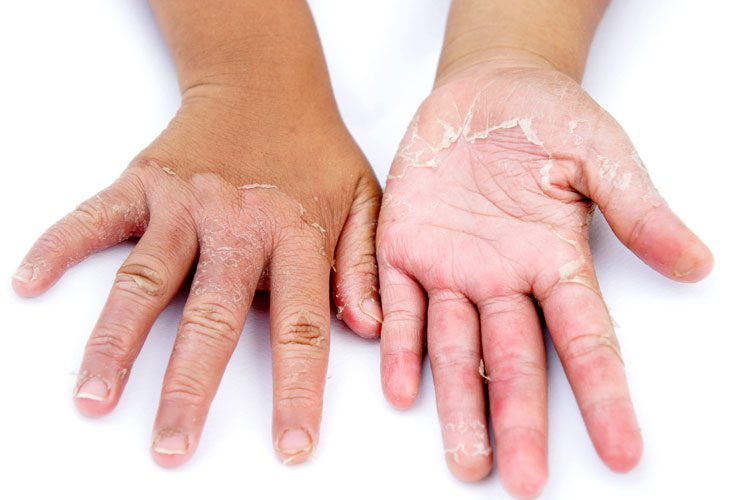Contact Dermatitis
What is Contact Dermatitis?
Contact allergy is an allergy caused by direct contact with an allergenic substance. These are so-called cell-mediated immunity, also called Type 4 allergies (delayed hypersensitivity). The hapten (allergen) that trigger symptoms are often simple chemicals. The most common disease caused by contact allergy is contact allergic dermatitis. The most common specific contact allergy is nickel allergy, but today there are thousands of known substances that can cause contact allergy. Other common causes of allergic contact dermatitis are substances in cosmetics, fragrances, preservatives, certain drugs for topical use, hair dye, hygiene products and chemical products. Contact allergy cannot be cured, but is something you will have to learn to live with.In order to identify the offending substance patch testing should be done.

What is a patch test and what will it look like?
A number of patch tests with different substances will be taped on your back(the number depends on the physician’s choice).Each patch test accommodates 10 potential allergic substances. A base line series with the most common allergy-causing substance is usually always tested. Additional substance can be added if there is a need.
For how long do I have these patch tests on me?
The patch tests will be removed after about 2 days, and a first reading can be made 20-30 minutes after removal. The last reading can be done on the 3rd day if it’s required. If you get a very strong reaction with strong itching and redness in any of the test patches, contact your doctor, who may then decide whether you should stop and remove the patch test.
What should I consider during test time?
Keep the test area on the back dry during this time period and avoid heavy and physical exercises that can cause excessive sweating as this may lead to that patch tests come off. Cortisone creams and antihistamines should not be used during the entire test period. Avoid sunbathing on the test area. The recommendation is also that you should wear loose clothing and sleep in a T-shirt as this helps to prevent the patch tests from rub off or peel off the skin.
The patch test is getting loose, what should I do?
Have someone press on the test patches. If necessary, you can also reinforce them with additional tape on the edges of the test units.
What should I do if I itch during the patch test?
Try not to scratch at the test site, because the itching is usually a sign of a positive reaction and the scratching can alter the test results.
How do I know if I have a contact allergy?
On your first reading, the doctor will carefully examine the test area for signs of an allergic reaction. The doctor will advise you if additional readings are required over the coming days.
What are the benefits of knowing what I'm allergic to?
Your doctor will tell you what you are allergic to. Where and in what types of products the substance can be found and how you do to avoid the substance in the future. You will also get information sheet where some of this information stands.
